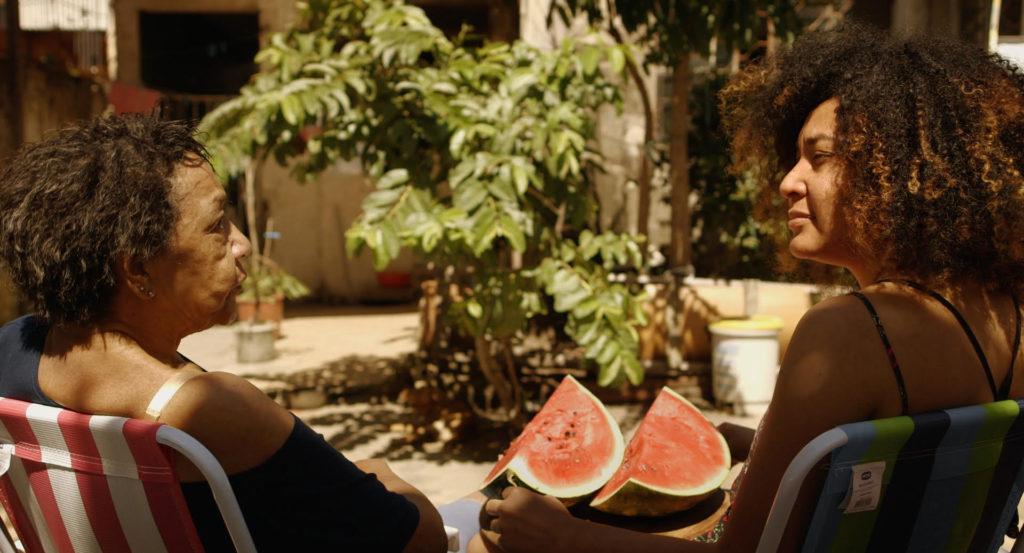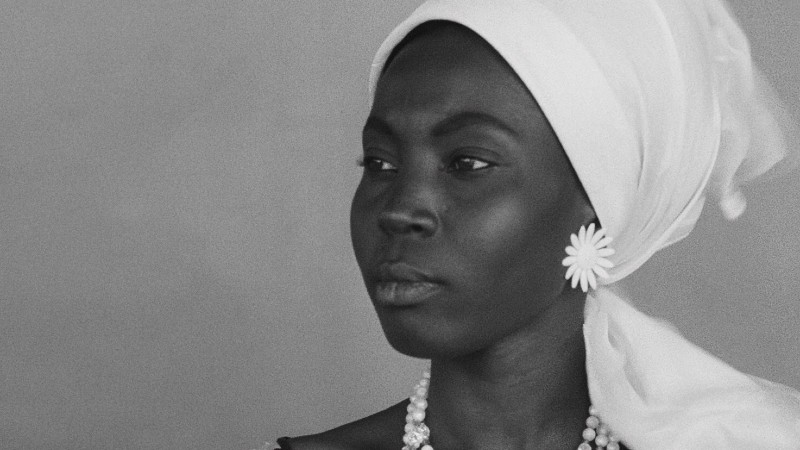At this year’s Edinburgh Festival Fringe, Aileen Angsutorn Lees spotlights the powerful presence of migrant women performers, showcasing the importance of diverse voices in the arts. Through attending eight distinct shows and engaging in interviews with the artists, she highlights the compelling stories and unique perspectives that are reshaping this year’s festival.
✍🏾 Aileen Angsutorn Lees 📷 Stuart Armitt
My first time at the Fringe was in 2017. I wanted to come to the world’s largest arts festival to fill up on the wide range of talent from artists often sidelined or silenced by mainstream institutions.
This year, the Fringe has still felt like a place where I can feel nourished. But with this joy comes complicated feelings. The Fringe Society recently defended its relationship with Baillie Gifford instead of using its influence to pressure the festival’s sponsor to divest from companies involved in arms manufacturing and illegal Israeli settlements in Palestine.
And while fascist violence broke out across the UK during the start of the festival, Edinburgh was seemingly unaffected. But for artists of colour, audiences of colour, and global majority businesses in the city, the racism and targeted harassment continues unchecked.
This only reaffirms why it is important to support marginalised voices. For allies, put your money where your mouth is. For fellow migrant women, it can be an incredibly empowering and healing experience to surround yourself exclusively with other migrant women.
There are over 3,000 shows at the Fringe this year. While it is difficult to know how many are led by migrant women, Fringe of Colour analysis has found that over 90% of shows are majority white performers.
I went to see eight Fringe shows led by migrant womxn. I laughed, cried, tensed, and raged. I loved the depths of these shows, the unexpected, and the subverting of genres. But I was also in awe of all this creativity. I got to speak to some of the artists about the importance of telling their stories, and I was so grateful to have met such inspiring womxn.
These shows and conversations have also been a healing experience. To have this breadth of stories shows the nuances of our different experiences — and it feels like resistance against the harmful rhetoric which dehumanises us and sees us as a monolith.
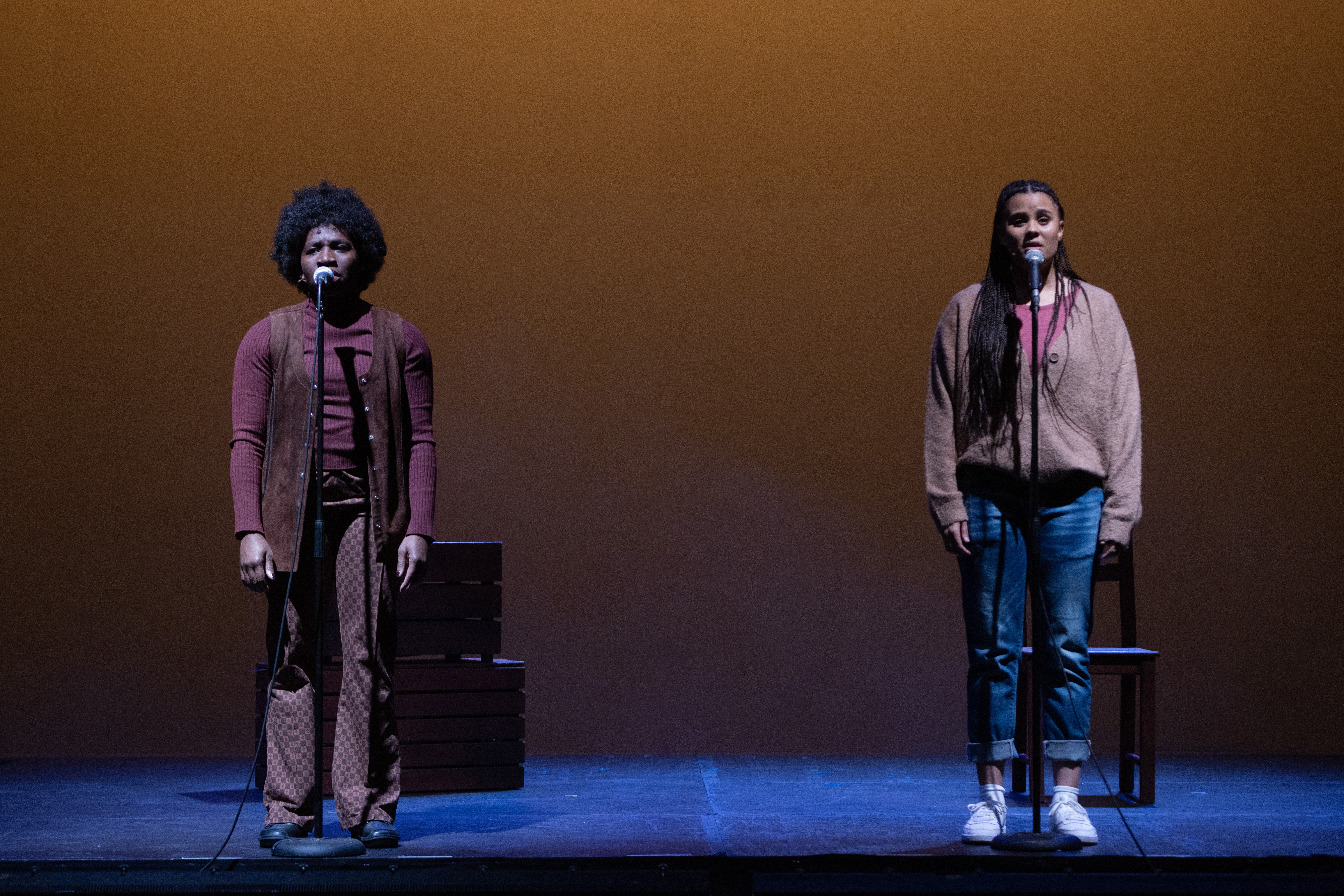
Through The Mud, by Apphia Campbell
Against a backdrop of police apathy in the face of violent racism across the UK, I saw this play tell the stories of two generations of Black women activists in the US and how their protests for civil rights are met with police brutality. It is a reminder that this is the other side of the same white supremacy coin.
Apphia herself plays real-life revolutionary Assata Shakur and Tinashe Warikandwa as college student Ambrosia. This cast of two seamlessly switches between two black liberation movements: Black Power in the 1970s and the start of Black Lives Matter in Ferguson in 2014, following the killing of Michael Brown. The rise of Assata’s profile among law enforcement — the first woman to be named a Most Wanted Terrorist by the FBI — is juxtaposed against a student’s awakening to racial inequality and discrimination, serving as a reminder of the importance of intergenerational learning.
It is a moving, empowering performance highlighting the strength of grassroots activism as well as the criminalisation of those fighting for justice. I hope this translates to action, where audiences feel mobilised to be active in their support of social justice and human rights.
Through The Mud is showing at Summerhall everyday until 25th Aug (not 12th or 19th) at 17:55
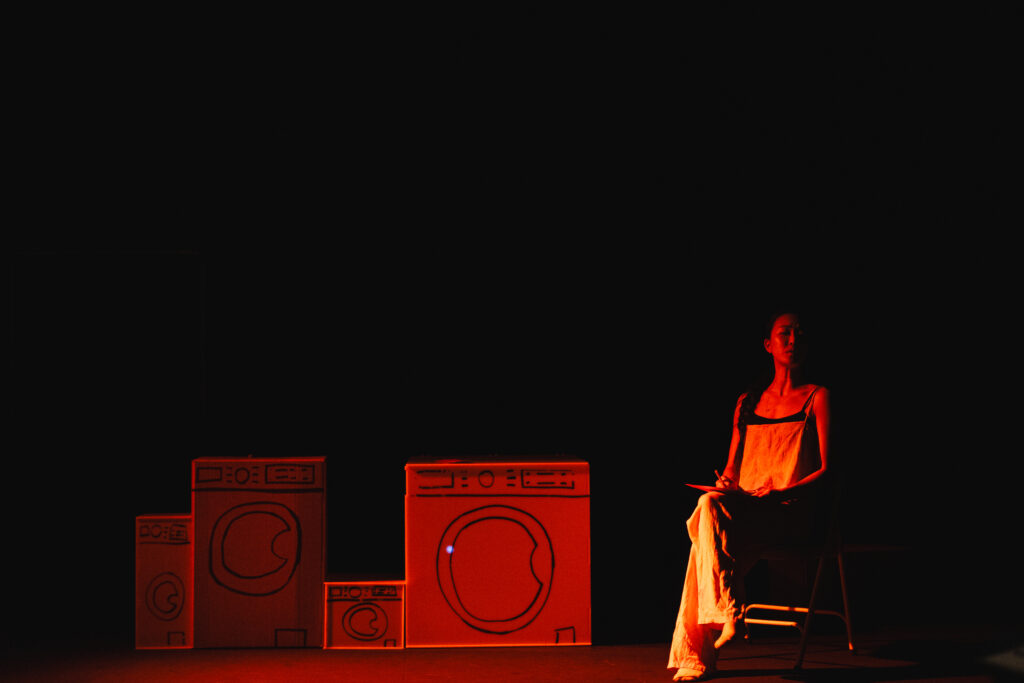
Don’t Call Me China Doll, by Diana Feng
Nerdy technician: 19
Sex worker/exotic woman: 17
Kung fu/martial arts/assassin: 28
Evil dragon lady: 21
Rounded characters: 2
This is the list of acting roles that Diana Feng’s character, China Doll, has auditioned for. This early scene in the play shows the sharp, critical lens of Hollywood and its continued racism and stereotyping of East Asians over the last century. The play interweaves the story of real-life actor Anna May Wong — one of the first Chinese American film stars in Hollywood — with the life of China Doll, an actor preparing for an audition to play Anna in a biopic.
The vignettes of Anna May’s life are slower paced compared to the scenes of CD’s current life, where the frantic energy and chaos mirror the character’s inner turmoil and grappling with identity. Yet both Anna May and CD share the burden of “representation” on screen.
I spoke to Diana about her inspiration for the play, and she told me how she saw a lack of stories about the portrayal of East Asian women on screen. “Most of the criticism comes from within the East Asian community”, she says, “but often the reality is, we either play the role that has been written for us, or we aren’t represented at all”.
This highlights a really fundamental point for me about representation — and its limitations. Having more diverse casting is not enough because our voices are still omitted from the stories themselves. The entire core team of Don’t Call Me China Doll is East and/or Southeast Asian (ESEA). This is so important, as Diana tells me, because “the show is not for the white gaze.”
This is evident in the show’s nuance. Internalised racism and the fetishisation of ESEA women are explored in a way that is painfully familiar. I asked Diana how audiences have responded, and she says she has been surprised by how many people have resonated with the show’s themes.
“I initially thought only ESEA people would empathise” she tells me, “but so many different migrants have come up to me to share their own stories of trying to hide or change their accents. We all internalise that shame because our Westernised society tells us to.”
I took so much away from this show. At times, it was cathartic; other times, I felt uncomfortable. “That’s good,” Diana says, “The story is uncomfortable. That’s the whole reason for telling it.”
Don’t Call Me China Doll is showing at Underbelly Bristo Square everyday until 26th Aug (not 12th) at 12:55. Diana plans to continue the show afterwards in London, before embarking on a nationwide tour. You can follow Diana on Instagram for updates.

Failure Project, by Yolanda Mercy
As Yolanda demonstrates through the character Ade in Failure Project, if an institution green-lights your story, it can still erase your voice. In this one-woman show, you see how Ade (also a writer and performer) navigates the arts, her career and relationships at a time when life should be “perfect”.
By breaking the fourth wall and conversing with the audience at the start of the show, Yolanda creates a sense of security and familiarity. But that sense of ease starts to erode as you see the way Ade is treated by the people she encounters, the loneliness that she feels and the insidiousness of having to pander to white guilt (“Why is it only when I talk about something traumatic I am heard?”).
I asked Yolanda how she has found the process of creating and performing this show. She tells me that it’s been “exciting, but daunting” to be able to make a story that she wants to tell. “I am so humbled and grateful that it’s resonating with people,” she says. “When you create something, it’s usually by yourself, so to have the opportunity to share it with others and to have this collective experience… it’s something that you can enjoy in a live performance.”
The play encapsulates so vividly all the ingredients that can lead to a decline in mental health. Not only does this include a breakdown in the key relationships in Ade’s life, but also those moments with strangers and acquaintances — the constant micro-aggressions, racism and misogynoir that are part of Ade’s daily life which feel heavier when your resilience is waning.
I ask Yolanda what she hopes audiences will come away with. “It’s not just about how hard it is to be an artist, but also about care,” she tells me. “It’s been so nice seeing people sharing love at the Fringe and caring for each other.”
At the beginning of the Fringe, Yolanda shared some of her own struggles on Twitter about the physical and mental exhaustion of the festival. “By vocalising these feelings,” she tells me, “there have been more people asking me how I feel. It has opened up the conversation to ask each other ‘How are you?’ and to give a genuine answer.”
The feeling of not wanting to take up space — both physically and metaphorically — is a recurring theme in the show. Through her performance as Ade and her brilliant writing, Yolanda conveys her discomfort and distress in such an emotive way. The somatic symptoms of stress and burnout feel like such an important element that is often missing in this space — that mental and physical health are inherently linked and cannot be talked about separately.
As creatives, Yolanda and I talk about how burnout should not be an accepted common trait and that there is strength in being vulnerable. Yolanda adds, “If everyone has these mixed feelings — anxiety, joy, stress, etc — what care is in place for creatives that come up here?”
I ask Yolanda what she hopes to do next. “I would love to find a way to unpick the themes in the show,” she tells me. “What can care to look like for artists? What can be done?” She wants to spend time after the Fringe to think about this. “It’s important to make people feel seen”, she adds, “and to hopefully make a change”.
Failure Project is showing at Summerhall everyday until 26th Aug (not 12th or 19th) at 13:30

Forked, by Jo Tan
The intersection of colonialism and internalised racism throughout Forked is a refreshing narrative that I don’t see enough of. Jo plays Netty, a “highly Westernised” Singaporean who moves to London to enrol in drama school. They also play a raft of supporting characters with such conviction—it is no wonder that they gained national recognition for their performance, having won The Straits Times Life! Theatre Awards for Best Actress in 2020.
I was taken on an emotional rollercoaster and loved every minute of it. From laughing at the countless slick observations (“It’s funny how the world wants us to speak English, but really it wants us to return to our cultural roots”) to then feeling my heart pounding and eyes welling up at the heated arguments between Netty and their classmates.
As well as mesmerising performances from Jo, the writing is incredibly incisive. It articulates the subtleties of “authenticity”, language, and multiculturalism with such skill.
I spoke to Jo about the origins of this performance and its influence. Jo speaks of the importance of finding your voice in Singapore due to the government’s campaigns attempting to suppress the country’s dialect, Singlish.
In 1999, the Singaporean government launched the “Speak Good English” movement, which, over the course of 20 years, pushed a white colonial approach to language. Jo tells me that this “continued internalised erasure” is explored through Netty’s relationship with speaking English—and which also speaks to a whole generation of Singaporeans.
But it’s not just Singaporeans who will resonate with this show. Many of us will understand the often contradictory pressures of assimilating while meeting cultural expectations. “We are all asking ourselves, what does ‘authentic’ mean?” Jo says, “And how can we do this when we are idealising certain types of perfection? Do we owe an explanation to anyone?”
I feel that it is a constant in my life, particularly with my mixed identity — as it’s something that I am always reminded of by other people. And those feelings of not being “enough” are unpicked in the show in such a clever, three-dimensional way.
I asked Jo what they hoped audiences would come away with. “A sense of empathy for people who are different from you”, Jo tells me, “but also a sense of forgiveness for yourself — particularly as a third-culture woman.”
Forked closed at the Fringe on 11th Aug. Jo plans to continue the show in Hong Kong and hopefully take it elsewhere. You can follow Jo and Forked on Instagram for updates.
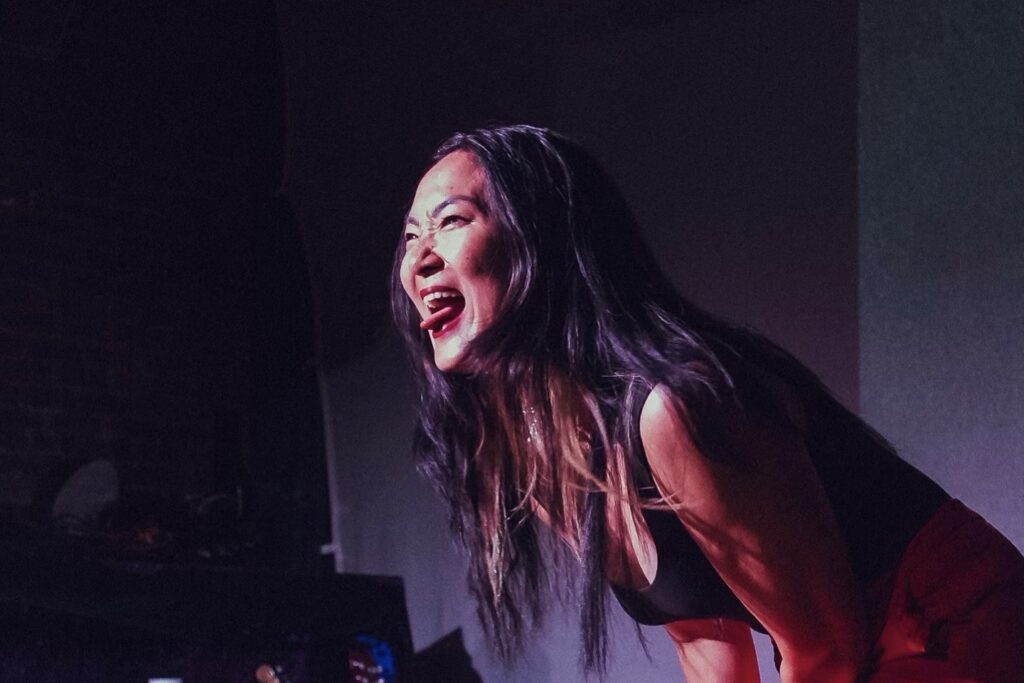
Tiger Daughter or: How I Brought My Immigrant Mother Ultimate Shame, by Charlene Kaye
Charlene is a multi-talented creative: a guitarist, a singer, an actor and a stand-up. So from the get-go I’m not convinced by the show’s title (joking!).
The show subverts the Asian stereotype of a “tiger mom” who pushes their children academically into what they perceive as “success”. It is as much a show about her mother, Lily, as it is about Charlene. And she doesn’t use her mother as a two-dimensional character to prop up her jokes — instead introducing her as a whole person.
What I was not expecting was this show to cut so deeply. I have never considered myself to be a subject of tiger parenting, yet so much of the show resonated. The screenshots of texts from Lily were comedy gold, as were Charlene’s responses. Charlene also captures so brilliantly that beneath these funny moments, we sometimes forget that our parents have their own stories and trauma — and that this is not often talked about.
What really stuck with me — and took me a few hours to recover emotionally from — was the powerful articulation of how complicated and fraught the mother-daughter relationship can be, particularly the cultural tension as first and second- generation migrants. But ultimately, as Charlene asks, “Do you need to understand someone to love them?”
Tiger Daughter is showing at Paradise in The Vault every day until 25th Aug (not 11th or 18th) at 18:40

How I Learned To Swim, by Somebody Jones
Frankie Hart plays Jamie, who is learning to swim at the age of 30. This one-woman play, written by Somebody Jones, explores grief and Black people’s relationships with water. Like every other show featured in this article, this is a story and perspective that is desperately missing from the arts.
The show opens with Jamie repeating “legs, legs, legs, legs… arms, arms,” and she tells the audience about her first pool party as a child — the moment you realise you can’t use the hair products in your friends’ bathrooms, and that you don’t want to live up to the stereotype of not swimming. From this first scene, the script and choreography are strong and kept me gripped as the story unfolded.
The show’s creator, Somebody, has spoken about how in developing this story, she “followed the research” finding it “interesting hearing how different Black communities react to water”. The layering of Jamie’s past through memories, interjected with scenes from the current day, build a full picture of this research: from the West African and Afro-American legend of Mami Wata, to the segregated pools in the US, to Kevin Burns and Paul Marshall — the first two Black British swimmers to represent Great Britain at the Olympics.
The stage design played a really impactful part in the production — the central object representing the edge of a swimming pool seemed naturally integrated into the character’s movements. The change in lighting and added sound effects were another simple yet effective way to portray the claustrophobic feeling that Jamie felt while underwater.
In the end scene, there’s a moment when a crab walks past Jamie and she offers it a shell from her bracelet. The crab climbs out of its shell and into a new one. I loved this small connection to the natural world — and a beautiful metaphor for the character’s own journey.
How I Learned To Swim is showing at Summerhall every day until 26th Aug (not Tuesdays) at 16:10
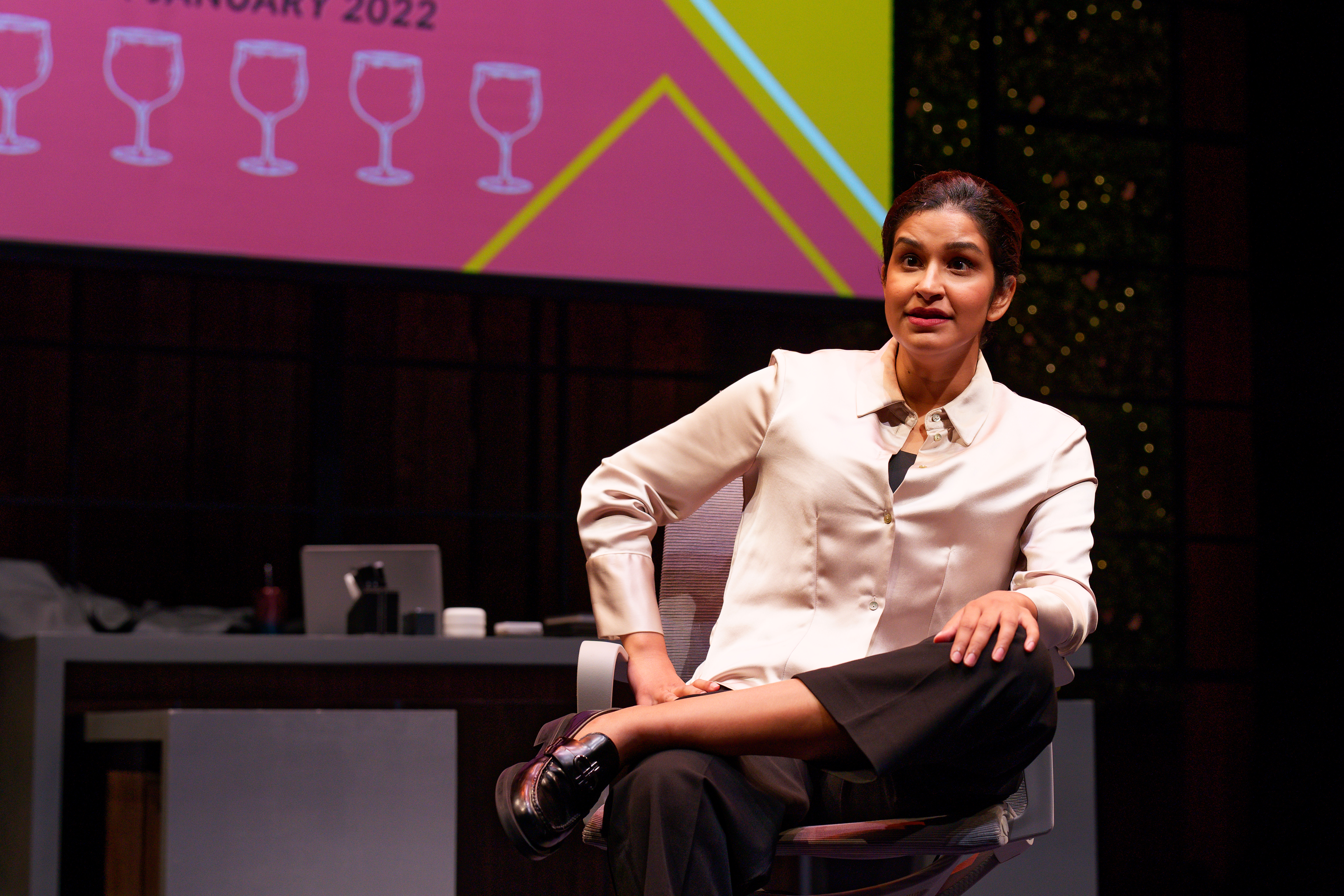
Psychobitch, by Amanda Chong
This one-woman show, written by Amanda Chong and starring Sindhura Kalidas, centres on overachieving journalist Anya Samuel as she prepares a presentation to give to her fiancé to explain the four times she has cried in public since they’ve been together.
The show sets itself up as a light-hearted performance initially — complete with accompanying slides, much to my delight — but quite quickly you start to tense up as you see a woman who feels like she has to justify her emotions to her partner.
Both the writing and performance are incredible. The show touches on so many different yet interconnecting themes — misogyny, racism, colourism, feminism, gender-based violence, religion — but it also captures the nuances of how these intersect with your own culture, and with familial relationships and trauma. This is particularly refreshing when so many feminist narratives ignore the experiences of women of colour.
I love the direction that the show travels to explore this, and how it doesn’t end up where it started. In a tender moment of realisation, Anya asks herself “Maybe love is a consistency that doesn’t demand any explanation when we are erratic.”
Psychobitch is showing at Summerhall everyday until 26th Aug (not 12th or 19th) at 19:45
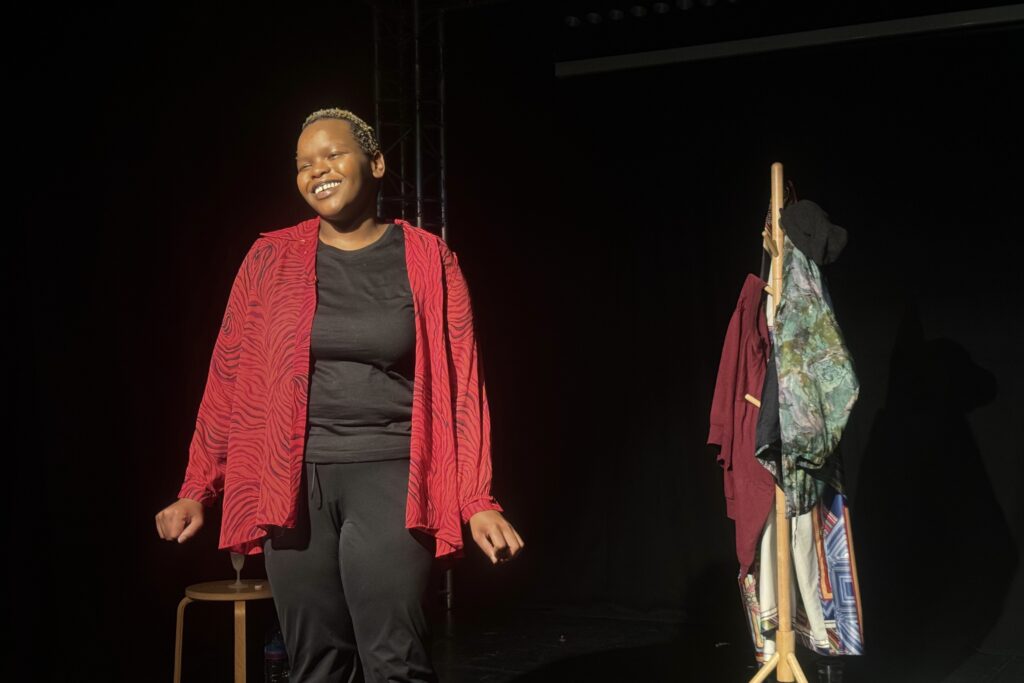
Count to Five, by Zamalisa
Zamalisa writes and performs this one woman play about rage, attempting to answer the question “When is it reasonable to lose your shit?”
The show was prefaced that it was still being workshopped, but that’s what I love about the Fringe. It is a great opportunity to see the creative process of a show and of the artist — while they are still figuring out what works and what doesn’t. And I hate the notion of perfectionism anyway (a symptom of white supremacy).
Zamalisa opens the show asking “tell me how you feel” while adding the caveats “but don’t be too harsh, don’t be too political… don’t be too Black.” A sharp commentary on the racist attitudes to Black anger, I was excited to see how the rest of the show would develop.
I loved the very specific but very on-point comparisons to The Good Place (one of my favourite shows). Zamalisa describes the cocoons which Sean imposes on the other devils when they become too emotional for his liking — and how as a Black woman in the world, everyone around her acts like Sean. Until it becomes something more sinister.
After the first couple of scenes, the plot line became a bit difficult to follow through the monologues of later characters. But it showed how much work, and script, goes into producing an hour-long production with only one performer.
I would really recommend seeing a show that is in the earlier stages of its production, and if you can, see it again at a later stage. Because it’s fun to see how brilliant minds work!
Count To Five closed at the Edinburgh Fringe on 10th Aug but continues at Camden Fringe on 24th and 25th Aug at 14:30
Aileen Angsutorn Lees (she/her) is a British Thai writer and photographer based in Scotland. She is also an activist and organiser passionate about social justice, climate justice and human rights, having previously advocated for East and Southeast Asian migrants. She now facilitates events for BPOC communities as part of her venture, Decolonising The Outdoors. She can be found on Instagram at @aileenang_


